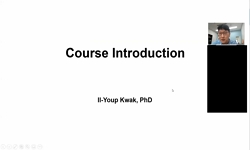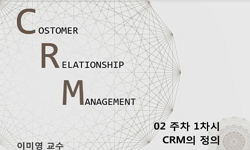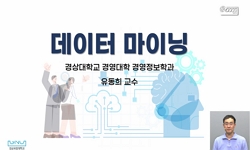The purpose of this study is to explore the characteristics of online classes students experienced in the full online class situation caused by COVID-19 and the needs of the students, and to present the direction of the future university classes. To t...
http://chineseinput.net/에서 pinyin(병음)방식으로 중국어를 변환할 수 있습니다.
변환된 중국어를 복사하여 사용하시면 됩니다.
- 中文 을 입력하시려면 zhongwen을 입력하시고 space를누르시면됩니다.
- 北京 을 입력하시려면 beijing을 입력하시고 space를 누르시면 됩니다.

포스트 코로나 시대 대학 수업의 방향성 탐색: 중간강의 평가 데이터 마이닝과 의미연결망 분석 결과를 중심으로 = Exploring the Direction of University Lectures in the Post-Corona Era : Focused on Analysis of Mid-semester Lecture Evaluation Data Mining and Semantic-network Analysis
한글로보기https://www.riss.kr/link?id=A107121759
- 저자
- 발행기관
- 학술지명
- 권호사항
-
발행연도
2020
-
작성언어
-
- 주제어
-
KDC
300
-
등재정보
KCI등재
-
자료형태
학술저널
-
수록면
195-228(34쪽)
-
KCI 피인용횟수
1
- DOI식별코드
- 제공처
-
0
상세조회 -
0
다운로드
부가정보
다국어 초록 (Multilingual Abstract)
The purpose of this study is to explore the characteristics of online classes students experienced in the full online class situation caused by COVID-19 and the needs of the students, and to present the direction of the future university classes. To this end, 6,455 responses of the students from 2,420 classes participating in the 2020 mid-semester lecture evaluation at University A in Incheon were collected, and text mining was conducted by classifying the collected data into liberal arts and majors. The research results are as follows. First, the overall network analysis showed the word with the highest rank in the liberal arts classes was ‘thinking’, and ‘many’, ‘homework’, ‘progress’, and ‘content’ showed relatively high ranks. On the other hand, in the major classes, ‘difficult’ and ‘progress’ showed the highest rank, and ‘time’, ‘content’, ‘listen’, and ‘watch’ showed relatively high ranks. Second, as a result of the group analysis, 3 liberal arts classes and 2 major classes were extracted. Third, an analysis of the ego network for each area of liberal arts and majors was conducted focusing on the instructional media (YouTube, Zoom, and PowerPoint) and interaction (communication) closely related with the online classroom environment. As a result of the study, it was confirmed that liberal arts classes and major classes respectively need an appropriate instructional design that suits the purpose of lecture and the needs of the students. In addition, the non-real-time lecture method needs to be selectively used depending on the purpose of lecture, the type of learning activity, and the learning ability of the students. Finally, various instructional media for content delivery need to be used depending on the characteristics of the contents.
참고문헌 (Reference)
1 남영옥, "협동학습과 협력학습에서 팀 구성원의 특성, 팀 멘탈 모델, 팀 효과성 관계 분석" 학습자중심교과교육학회 16 (16): 517-541, 2016
2 한신일, "한국대학의 강의평가실태 분석" 한국교육행정학회 23 (23): 379-404, 2005
3 김필성, "한국대학에서의 강의평가의 활용 양상: ACE 사업 참여 대학을 중심으로" 사단법인 인문사회과학기술융합학회 9 (9): 29-40, 2019
4 최문기, "학생들이 인식하는 좋은 전공수업과 교양수업의 비교" 한국교양교육학회 10 (10): 325-348, 2016
5 최원형, "학생 ‘3분의 1 이상’-당정 ‘10%’…대학등록금 반환 규모도 논란 예고"
6 김성숙, "학기중 적용을 위한 강의진단 평가도구 개발과 타당성 분석" 한국교육평가학회 21 (21): 55-78, 2008
7 김성수, "플립러닝을 활용한 한국어 수업 운영에 관한 연구" 교육연구소 23 (23): 529-550, 2017
8 서병조, "토픽 모델링을 활용한 한국의 플랫폼정부 연구동향 분석" 한국지능정보사회진흥원 24 (24): 3-26, 2017
9 김성진, "토론 중심 교양수업을 위한 창의적 교수법" 한국사고와표현학회 7 (7): 7-60, 2014
10 공준형, "치의학 교육의 새로운 트렌드 : 구글 클래스룸을 이용한 플립드 러닝(Flipped learning)의 적용 및 평가" 한국디지털콘텐츠학회 17 (17): 317-327, 2016
1 남영옥, "협동학습과 협력학습에서 팀 구성원의 특성, 팀 멘탈 모델, 팀 효과성 관계 분석" 학습자중심교과교육학회 16 (16): 517-541, 2016
2 한신일, "한국대학의 강의평가실태 분석" 한국교육행정학회 23 (23): 379-404, 2005
3 김필성, "한국대학에서의 강의평가의 활용 양상: ACE 사업 참여 대학을 중심으로" 사단법인 인문사회과학기술융합학회 9 (9): 29-40, 2019
4 최문기, "학생들이 인식하는 좋은 전공수업과 교양수업의 비교" 한국교양교육학회 10 (10): 325-348, 2016
5 최원형, "학생 ‘3분의 1 이상’-당정 ‘10%’…대학등록금 반환 규모도 논란 예고"
6 김성숙, "학기중 적용을 위한 강의진단 평가도구 개발과 타당성 분석" 한국교육평가학회 21 (21): 55-78, 2008
7 김성수, "플립러닝을 활용한 한국어 수업 운영에 관한 연구" 교육연구소 23 (23): 529-550, 2017
8 서병조, "토픽 모델링을 활용한 한국의 플랫폼정부 연구동향 분석" 한국지능정보사회진흥원 24 (24): 3-26, 2017
9 김성진, "토론 중심 교양수업을 위한 창의적 교수법" 한국사고와표현학회 7 (7): 7-60, 2014
10 공준형, "치의학 교육의 새로운 트렌드 : 구글 클래스룸을 이용한 플립드 러닝(Flipped learning)의 적용 및 평가" 한국디지털콘텐츠학회 17 (17): 317-327, 2016
11 고은미, "전문대학 수업유형별 강의평가도구 개발 연구" 인문과학연구소 31 : 365-394, 2013
12 윤회정, "전공교과와 교양교과에서의 핵심역량에 대한 대학생들의 교육요구도 분석" 학습자중심교과교육학회 15 (15): 567-584, 2015
13 김학일, "이공계 강의평가 결과의 실증적 분석을 통한 강의평가제도 개선방안" 한국공학교육학회 10 (10): 58-77, 2007
14 이은철, "온라인 학습 환경에서 고성취 집단의 학습과정에서 나타난 상호작용 분석" 한국교육공학회 31 (31): 159-190, 2015
15 김성빈, "온라인 고등․평생교육 학습자의 학습참여 동기와 학습 만족도 관계에서 지각된 유용성, 자기조절학습 능력의 조절효과 검증" 원격교육연구소 13 (13): 85-107, 2017
16 최지윤, "온라인 강의 정보 탐색 및 수강신청 행동 분석과 개선안: 서울대학교 수강신청시스템을 중심으로" 733-736, 2010
17 김진영, "역전학습기반 커뮤니케이션 강좌의 적용과 학생들의 인식에 관한 연구 - 과학기술특성화 대학의 인문사회분야 교양 교과목을 중심으로" 교육연구소 21 (21): 5-38, 2015
18 김성봉, "액션러닝기반 교양수업 만족도 요인분석" 한국교양교육학회 7 (7): 273-299, 2013
19 길양숙, "수업평가 결과와 쟁점" 한국교육학회 41 (41): 303-323, 2003
20 곽기영, "소셜네트워크분석" 청람 2014
21 김용학, "사회 연결망 분석 제3판" 박영사 2011
22 주영주, "사이버대학에서 교수실재감, 인지적 실재감, 사회적 실재감과 학습성과와의 구조적 관계 규명" 한국정보교육학회 14 (14): 175-187, 2010
23 장은정, "사이버대학 질 관리 준거 개발 연구" 한국교육공학회 28 (28): 103-136, 2012
24 이영희, "미래교육 관련 연구 메타분석을 통한 미래교육의 방향" 교육연구소 24 (24): 127-153, 2018
25 유현숙, "대학의 교수‧학습 질 제고 전략 탐색 연구(Ⅲ): 대학 유형별 교수ㆍ학습 역량 평가(체제) 다양화-4년제, 전문대학" 한국교육개발원 2015
26 송해덕, "대학수업 혁신을 위한 몰입(engagement)형 플립드 러닝 모델 개발" 99-104, 2019
27 남창우, "대학교육 지원을 위한 오픈소스 LMS 기능지표 개발" 원격교육연구소 16 (16): 137-164, 2020
28 김정겸, "대학강의 평가도구 개발" 한국산학기술학회 18 (18): 187-196, 2017
29 이종연, "대학 이러닝 강좌의 학습만족도 및 성취도 증진을 위한 컨텐츠 전달전략의 선택방안 - 학습자의 사전지식과 자기주도성을 중심으로 -" 한국교육공학회 20 (20): 185-214, 2004
30 신종호, "대학 수업 지원을 위한 학습분석 기반 교수자 대시보드 개발" 한국교육정보미디어학회 24 (24): 489-515, 2018
31 김은혜, "대학 교양체육 수업 문화와 교육적 가능성 탐색: K대학교 수업사례를 중심으로" 한국체육학회 55 (55): 263-278, 2016
32 지은림, "대학 교수자를 위한 강의자가진단도구 개발의타당화 및 관련변인 분석" 한국교육평가학회 19 (19): 51-72, 2006
33 남민우, "대학 강의평가에서 수강인원에 따른 차이 검증 및 가중치 적용 방안 연구" 교육공학연구소 8 (8): 153-168, 2014
34 조수선, "대학 강의평가 영향력 요인 중 학생 특성의 효과에 대한 사례 연구" 한국공학교육학회 19 (19): 38-43, 2016
35 김경언, "대학 강의평가 도구 개선 및 타당화 연구: K대학 사례를 중심으로" 한국교육문제연구소 36 (36): 1-26, 2018
36 이수상, "네트워크 분석 방법론" 논형 2012
37 기영화, "글로벌 MOOC의 학습형태와 한국형온라인공개강좌(K-MOOC) 학습경험분석" 교육연구소 24 (24): 65-86, 2018
38 이효진, "교양과목과 전공과목에 따른 대학생의 수강신청 기준에 관한 연구" 안암교육학회 23 (23): 79-99, 2017
39 박완성, "교양 학과목 교수방법과 강의평가에 대한 연구" 한국교양교육학회 4 (4): 29-44, 2010
40 육진경, "교수자의 강의개선 노력과 교육효과성 관련 변인간의 관계분석" 한국사회적질학회 1 (1): 35-53, 2017
41 민혜리, "공과대학 학생들의 수업에 대한 요구와 만족도에 근거한 공과대학 수업개선 방안 탐색" 한국공학교육학회 12 (12): 38-45, 2009
42 김미영, "공과대학 수업에서 혼합학습(Blended Learning)설계 및 운영 사례 연구-C 대학교 강좌 운영을 중심으로" 9 (9): 37-48, 2006
43 김명화, "강의평가의 타당도와 신뢰도" 교육연구소 6 (6): 1-24, 2005
44 윤유진, "강의평가에 영향을 미치는 변인 연구- 교양교과목을 중심으로" 한국교양교육학회 12 (12): 185-210, 2018
45 양길석, "가중치를 적용한 강의평가 결과 분석" 한국교육방법학회 24 (24): 589-616, 2012
46 오피니언, "[이슈토론] 대학 등록금 반환"
47 Hobsoan, S. M., "Understanding student evaluation: What all faculty should know" 49 (49): 26-31, 2010
48 Moore, M. G., "The Effects of Distance Learning" The Pennsylvania State University. American Center for the Study of Distance Education 1997
49 Kulik, J. A., "Student Ratings: Validity, Utility, and Controversy" 109 : 9-25, 2001
50 Marsh, H. W., "Multidimensional Students' evaluations of teaching effectiveness: A test of alternative higher-order structures" 83 : 285-296, 1991
51 IDEA, "Instructional development and effectiveness assessment student ratings of instruction" IDEA
52 Berry, M. J. A., "Data Mining Techniques: For Marketing, Sales, and Customer Relationship Management" Wiley 2004
53 국가지정 의과학 연구정보센터, "COVID-19로 인한 대학․대학원 비대면수업 교수 학생 의견 조사(2020.04.22.)" 2020
54 윤대균, "COVID-19 확산에 따른 비대면 원격수업에 대한 단상" 한국인터넷진흥원(KISA) 26-30, 2020
55 김옥분, "AI 쳇봇을 활용한 플립러닝 기반의 대학교육의 변화" 한국정보통신학회 22 (22): 1618-1624, 2018
동일학술지(권/호) 다른 논문
-
유아교사의 교직선택동기와 교직헌신의 관계에서 직무스트레스의 매개효과
- 인하대학교 교육연구소
- 이순아
- 2020
- KCI등재
-
초등학교 사회 교과서에 나타난 다문화 관련 내용 분석 : 2015 개정 5~6학년을 중심으로
- 인하대학교 교육연구소
- 김혜빈
- 2020
- KCI등재
-
‘되기(becoming)’ 관점에서 1세반 초임교사 바라보기
- 인하대학교 교육연구소
- 권현조
- 2020
- KCI등재
-
유아 연극놀이에서 나타나는 즉흥성의 의미 탐색 : Bakhtin의 대화주의를 중심으로
- 인하대학교 교육연구소
- 고지연
- 2020
- KCI등재
분석정보
인용정보 인용지수 설명보기
학술지 이력
| 연월일 | 이력구분 | 이력상세 | 등재구분 |
|---|---|---|---|
| 2022 | 평가예정 | 재인증평가 신청대상 (재인증) | |
| 2019-01-01 | 평가 | 등재학술지 유지 (계속평가) |  |
| 2016-01-01 | 평가 | 등재학술지 선정 (계속평가) |  |
| 2015-12-31 | 학술지명변경 | 외국어명 : 미등록 -> Journal of Education & Culture |  |
| 2015-01-01 | 평가 | 등재후보학술지 유지 (계속평가) |  |
| 2013-01-01 | 평가 | 등재후보 1차 PASS (등재후보1차) |  |
| 2012-01-01 | 평가 | 등재후보 1차 FAIL (등재후보1차) |  |
| 2011-01-01 | 평가 | 등재후보학술지 유지 (등재후보1차) |  |
| 2009-01-01 | 평가 | 등재후보학술지 선정 (신규평가) |  |
학술지 인용정보
| 기준연도 | WOS-KCI 통합IF(2년) | KCIF(2년) | KCIF(3년) |
|---|---|---|---|
| 2016 | 1.48 | 1.48 | 1.37 |
| KCIF(4년) | KCIF(5년) | 중심성지수(3년) | 즉시성지수 |
| 1.42 | 1.53 | 1.481 | 0.24 |




 KCI
KCI KISS
KISS






